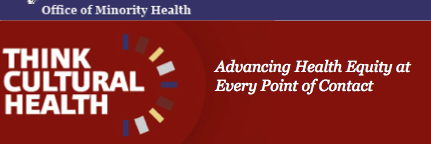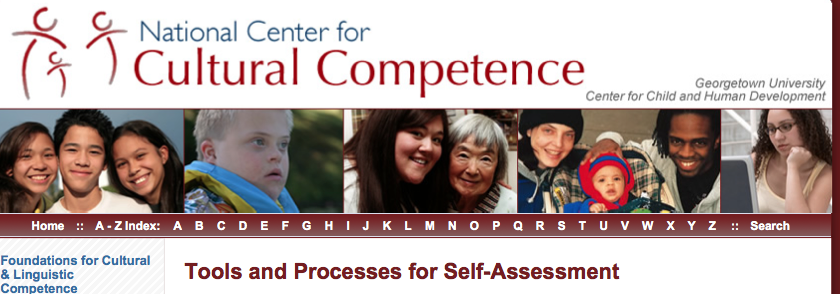Raquel Ferrell Crowley
What is cultural competence? And how do we improve our capability in this area?
In this post, you will have the opportunity to not only find out what cultural competence is, but to meet an expert on cultural competence, take an assessment of how you are doing and take some online cultural competence training!
“Cultural competence refers to the process by which individuals and systems respond respectfully and effectively to people of all cultures, languages, classes, races, ethnic backgrounds, religions, and other diversity factors in a manner that recognizes, affirms, and values the worth of individuals, families, and communities and protects and preserves the dignity of each (NASW, 2001; p. 11).”
Cultural competency is considered critical:
- Social workers are charged with the responsibility to be culturally competent as per NASW’s Code of Ethics (2000a)
- NASW details standards for cultural competence in social work practice
- The Office of Minority Health (OMH) views cultural competency on the part of practitioners, as one of the key elements required for closing the disparities gap in health care for diverse populations.
As a result of cultural competence being of such vital importance to our ability to work well with people who are different from us in one way or another, I was most excited when I happened to run across Raquel’s bio on twitter @extcharte.
This is because Raquel Ferrell Crowley is a school administrator with expertise in cultural competency who kindly agreed to be interviewed on this topic.
In terms of Raquel’s educational background, she has a Master’s degree in School Administration, as well as a Bachelor of Science in Family and Consumer Sciences/Career and Technology Education and Spanish Education.
So without further ado, Raquel, how did you develop your expertise on cultural competence?
One way that I have developed my expertise on cultural competency was through my undergraduate work as a Family and Consumer Science educator, and English as a second language instructor, as well as the various amounts of research designed in my foreign language classes and community centered collaborations.
I have only traveled abroad once, due to my school, work schedule and family dynamics, but have been blessed with resources and contacts through my associations and attendance in forums in professional development as an educator. It also helps that I somehow gained a passion for developing curriculum that focuses on diversity – using these contacts.
Another way I developed cultural competencies was by participating in TRIO programs as an undergraduate, graduate and mentor with my local college campus, Central Washington University.
What are TRIO programs?
TRIO programs are federally funded educational outreach programs designed to assist low socio- economic students, first generation attendees, as well as individuals with disabilities to attain degrees at the college or university. They help a student progress from middle school to high school graduation and on to college.
Some examples of TRIO programs are: UpWard Bound, Talent Search, Student Support Services, McNair Graduates, Educational Opportunity Centers, and Veterans UpWard Bound.
You describe your position on twitter as “a certified educator/school administrator with a focus on cultural competency.” What does your work entail on a typical day?
My “job” does not have a typical day… I focus on respect, perspectives, critical thinking, analogies, and guide the interactions for students to compare and contrast what is perceived and what is received. For me, it is crucial to remember my own cultural worldview, attitudes, skills and ability to interact with others.
Cultural competency definition varies from environment to environment. Therefore, I make an effort to understand what the audience is asking when working with cultural competencies.
When I am in the school building leading; customs are considered and adapted to fit the needs of the building and the personalities within.
When I am out and about doing field work or home visits, and community interactions: I first observe, interpret, analyzes and then synthesis what my understandings are and seek clarifications often, and sometimes multiple times, so I am not focused on my own beliefs and values.
Some of my teachers would say the first question I always ask them is – “help me understand what the dynamics are and how the present situation addresses our cultural dynamics.” Generally, if they cannot answer the question – we have a personality conflict and need to mediate and reframe the situation to best meet the goals we defined as a team to focus on.
When addressing a community or work environment, I tend to ask questions using “Crucial Conversations.”
What do you mean by “Crucial Conversations?”
Crucial Conversationsis a phenomenal book as is Fierce Conversations. Crucial Conversations is about having meaningful conversations that address the impact of what is understood, delivered and performed.
I have found myself adapting and implementing concepts along with Solution Based, Cultural Competencies when addressing my teams of colleagues- community to school. As an Instructional Leader, I would highly recommend a book study with your team or contact the company and complete workshops to support your environment.
How do you position the benefits of building cultural competence to students vs. the staff?
I believe the best way to engage others with being culturally competent is to model, practice and explain as you talk with them.
We do this because of that, we share this because we have that, we support because of ….OR, help guide me understand how this develops over time, what makes this adaption happen, when is the likelihood of this (whatever that topic may be) occurs as a generational effect on the effect of the culture.
Learning is a two-way street – mine and theirs; but adapting and modifying to fit what cultural dynamics are to elaborate and incorporate. Often a comparison does take place so that acceptance can be easier to accept and relate the reasoning to the situation.
When a concern would arise, we (staff or student) would treat the situation as a dynamic within our established community while encompassing the outer established community. We look for a solution to the situation – not more problems, and we tend to have options that are crucial to anything in working with cultural competencies. In order for acceptance to be understood, the rules /guidelines would need to defined and shared verbally.
I have been very fortunate to be in buildings with high school students in grades 9-12 and I provide them with the choice in how they would like to be treated, interacted with, trained, and/or overall respected throughout my courses.
As for my staff and teammates, everything is based upon the relationship we build, the boundaries established in our day-to-day operations and the ability to recognize differences in each other. Options, options, options…
Could you give us an example of how you may try to teach an element of cultural competence to either staff or students?
The Barnga game is a great example on how I incorporate cultural competencies with both staff and students. Barnga is all about learning customs and intercultural relations, both spoken and unspoken, understanding the dynamics of change, celebration of differences and accepting the order designed within the cultures of families, communities and society.
This card game was developed by a doctor who went to Africa on a mission. While the doctor was in Africa bringing modern medicine to the people, he learned many things about cultural dynamics within small communities, big communities and tribes.
He learned his lesson through a medical development of his own, whereas the modern medicine did not help him but rather delayed him from getting better. He refused to listen to the local people (indigenous people).
Through his interactions with the community he learned valuable lessons. He learned about judging, preconceived ideas and the established order. He also learned about the options of options while speaking and observing.
Here is a run-down on what transpires:
- Realization that different cultures perceive things differently, and/or play by different rules.
- Students must understand and reconcile these differences if they want to function effectively in a cross-cultural group.
Introduction: In Barnga, participants experience the shock of realizing that despite many similarities, people of differing cultures perceive things differently or play by different rules. Players learn that they must understand and reconcile these differences if they want to function effectively in a cross-cultural group.
Overview: Participants play a simple card game in small groups, where conflicts begin to occur as participants move from group to group. This simulates real cross-cultural encounters, where people initially believe they share the same understanding of the basic rules.
In discovering that the rules are different, players undergo a mini-culture shock similar to actual experience when entering a different culture. They then must struggle to understand and reconcile these differences to play the game effectively in their “cross-cultural” groups.
Difficulties are magnified by the fact that players may not speak to each other but can communicate only through gestures or pictures.
Participants are not forewarned that each is playing by different rules. In struggling to understand why other players don’t seem to be playing correctly, they gain insight into the dynamics of cross-cultural encounters.
The activities are then debriefed after a period of time of play and the outcomes are HIGHLY INTERESTING. What is known, perceived, interacted and developed surface in the debriefing and shapes the players into understanding their own biases and adaptions to change.
Initially I took a self-assessment that was provided by the Cultural and Diversity Center on my campus back during my undergraduate years. I was provided with a Competency Quest assessment tool that provided feedback tailored to me specifically. From that assessment, I was able to identify strengths and weaknesses and build from there.
Since that initial assessment, I have been on a road map of learning and continue to learn from others. I adore the fact that one facilitator at WSU borrowed the game I borrowed from one of my mentors – Dr. Neil McFarlane from Central Washington University and is now using it in their practice at WSU as a challenge facilitator – which I am also part of in 4-H programs.
(Harry Wong stated in the first days of school, “Bag, borrow and steal is really how learning is transformed and is the greatest compliment to our profession.”)
I stay connected to my TRIO resources and professionals focused on diversity, education and poverty, workforce development, economic development, family sociology, and identified cultures within my state. I recently attended training on the dynamics of Native American cultures and federal laws focused on sovereign nations offered by the Children’s Alliance.
Whenever involved in a cultural dynamic situation, I ask:
- What is the desired outcome?
- What is the impact of the current interference or what are the preconceived perceptions happening?
- What has been considered and what has been implemented?
- Who are the vested parties and what is their interest in the project/performance or situation?
And trust me, I am a plethora of questions – when it comes to understanding the dynamics and getting to a solution, when asked to engage with others.
Self-Assessment and Training
For those of you who are interested in following Raquel’s great example, you may conduct your own self-assessment at: Harvard University, Georgetown University or Management Sciences for Health to see where you are in terms of your cultural competence.
Following your assessment, you may want to take some free training Think Cultural Health [the variation for nurses is the one most applicable for social workers; it gives 9 CEUs for social workers], watch replays of CLAS Webinars and/or check out Georgetown University offerings to build up your specific areas that could use improvement.
A year or two later, you may wish to take a new self-assessment and see how you have improved and then take some additional trainings…
In addition, here is a free implementation guide provided by the U.S. Department of Health & Human Services to help you advance and sustain Culturally and Linguistically Appropriate Services (CLAS) for your organization.
What do you love most about your position?
I love:
- interacting with families and learning the dynamics within their family circle.
- being a part of young people’s lives, understanding their goals and attributes for a future.
- partnering with agencies and resources to help increase awareness and needs of families, individuals and communities.
- being part of the established order, learning the established rules and customs of others, while gaining a deeper understanding of the not so understood cultural norms.
- having the opportunity to be able to say “I did my best to understand their needs and help solve the underlying problem – one solution at a time.”
And what aspects do you find challenging about your work?
I find that there are challenging aspects to my daily work. One of the most stressful elements is when I must tell some families or individuals that according to the “best practices” in the United States, “this must happen.”
While the United States was founded on a variety of cultures and norms, it has lost sight of incorporating these cultures, as part of norming. Some would say big brother is truly watching and limiting the ability to incorporate choice and voice.
It can also be hard for me to work, on a daily basis, with federal and state policies, knowing that a direct violation of cultural differences is occurring. I realize policies are written for the good of the order, but sometimes they directly tie the hands of practice in the world of work, and limit the individuals’ own choice.
When I am in front of students, staff or community or evaluating information on educational, social, health, medical or financial needs, I can drive my team nuts when I say: “Ok, so what are our cultural dynamics here, what are we considering here, how is this decision going to impact or influence the dynamics within the defined culture?” “Are we leaving a footprint here that is our bias to the situation or is this really going on? Let’s examine what we have and fact find before we jump to our ideals.”
As Covey would say in his book – 7 Habits of Highly Effective People, “begin with an end in mind.” For me, that is making sure that an assessment took place – to provide the right solution for the situation.
For the record, when weighing any fact-finding or research in my cultural interactions or teachings – Safety is the first thought and action taking place, mine, theirs and the situation – Always!
What 3 key actions would you recommend providers take to start improving their cultural competence?
First, I think a person needs to self-analyze to determine what their assets and liabilities are in cultural competencies and determine their own strengths and abilities.
Secondly, examine the practice around your work environment and determine its assets and liabilities, what can you change that impacts you directly – others will observe and be impacted.
Thirdly, seek out the change necessary to impact yourself and the environment you are working within IF you are one to be a change agent – and baby step your way to where you want to be. Ask for professional development, seek out workshops and invest in yourself if your employer doesn’t recognize the importance of learning and growing as a member of their team.
Finally, what are some resources that you would you recommend to mental health providers and/or business professionals who want to increase their cultural competence?
As an educator, I find my college campuses to be fabulous resources and very accessible. I have located exceptional resources within departments such as Equity and Diversity programs, the National Association of Family and Consumer Sciences, organizations within Workforce Development, National associations for Health and Human Services.
For mental health providers and/or business professionals, I believe that each state has state and federal agencies to interact and collaborate with at various levels.
In addition, the following resources might be a benefit for your readers to access: www.nami.org for a toolkit for assessing cultural competencies in peer-run mental health organizations; www.mocmhc.org for a practical guide for mental health service providers: www.nih.gov for clear communications in health disparities, and systems for personnel providing behavioral health services. www.cultureconnectinc.org is a great resource for accessing workshops that are designed for the professional. There are also various magazines, scholarly articles, and websites one may access.
Finally, belonging to various associations, attending workshops and participating in ongoing professional development access have all been of help to my continuing growth and evolution. Using social media and participating on online chats have also been a way for me to keep up-to-date in cultural competence.
Are there particular membership organizations or associations that you find helpful in continually building up your cultural competence?
I have found the following to be helpful: National Association of Family and Consumer Sciences, TRIO, Washington State Hispanic Affairs Commission, Association of Washington State Principals, Connected Principals, and 4- H Extension Programs, Diversity Center at WSU, UW, and CWU.
Thanks so much, Raquel, for providing us with all this invaluable information about cultural competence!
What are your thoughts/questions about cultural competence? Did you have some surprises when you took an assessment?
Reference:
NASW (2001). NASW standards for cultural competence in social work practice.







Great blog!
Hi Quentin,
Thanks for visiting my blog and sharing your kind feedback 🙂 I’m so glad that you found this post helpful.
Best,
Dorlee
Hi Dorlee,
Great post! My company cultural candor, is US state department approved to provide cultural competency training (http://www.culturalcandor.com/cultural-competency-training/) . Would it be possible to quote it in your post?
Thanks.
Hi Lau,
Thanks for your kind feedback. That’s great that your [fee based] training has been approved by the U.S. State department. My article purposely includes mention of recommended no cost trainings (particularly of importance for social workers).
Best,
Dorlee